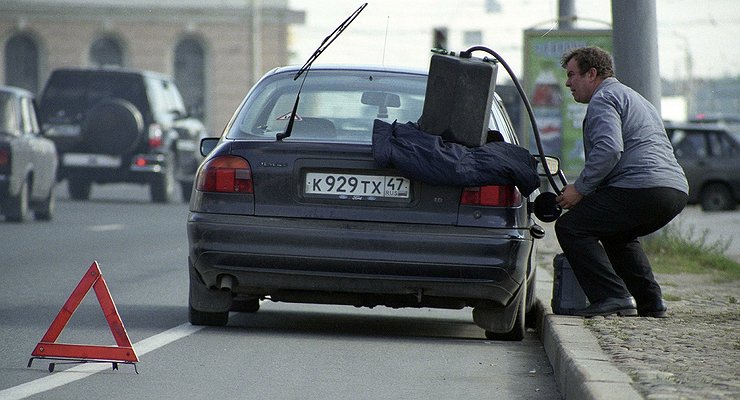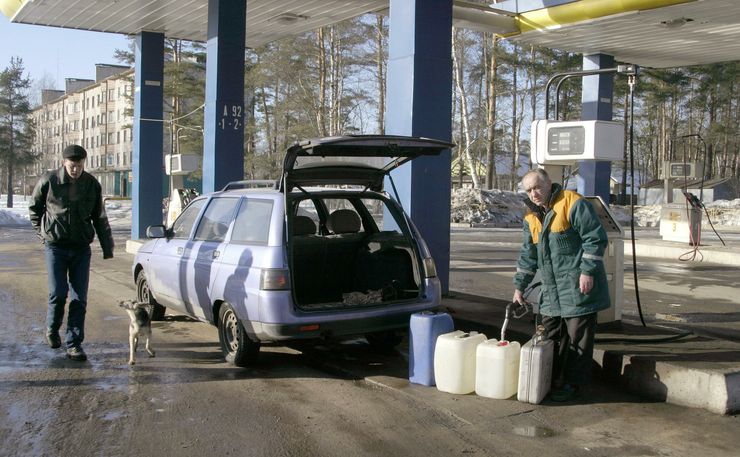Experiment: pour “rotten” gasoline into the car’s tank
- September 15, 2022
- 0
An old “stash”, Grandpa’s supplies or the remains of a New Zealand summer for a lawnmower chainsaw makes the most sense to send to a car’s tank, enjoying
An old “stash”, Grandpa’s supplies or the remains of a New Zealand summer for a lawnmower chainsaw makes the most sense to send to a car’s tank, enjoying

Let’s face it: gasoline also has an expiration date. According to GOST – a whole year, but under a number of conditions, the key of which is hermetic packaging. Is such a gas tank or jerry can? Of course not. In addition, gasoline still tends to evaporate and oxidize, additives precipitate. Basically, for three summer months bought in a jerry can for refueling chainsaws and lawnmowers, such a “cocktail” is formed that it is not worth pouring it into a car tank. The more time the fuel spends in the shed/hangar/workshop/garage – the worse. Believe us, we’ve tried.
Spoiler: The result was impressive, but let’s start at the beginning. With about a quarter of a tank of fresh, recently filled fuel and realizing that we are conducting an experiment on a personal car, we fill ten gallons of one year old gasoline that has gone through all the cycles of weather changes in the shed. The canister is made of Soviet aluminum with a long dry rubber seal on the lid and characteristic streaks along the seam. In short, we have a complete “acid”.
The fuel level sensor reads a little less than half, let’s start. The engine quickly “packs” – there is still fresh petrol in the pipes, but already after a “quarter tank” changes begin to be felt. The car starts to pull worse, half of the “horses” approach, small jumps in speed appear: the accelerator tries to figure out what kind of mess it got into. It’s just the beginning!
next start. Less than a quarter on the dashboard, the studied fuel certainly came into action: you have to turn the starter for a long time, and then help the engine with the accelerator – the speed is low, the car strives to stall. Warming up is done with varying degrees of success, we proceed to trial runs. The goal is to drive 12 km to the gas station and fill up with fresh fuel.
With great difficulty the gas stops at the traffic lights and the nerves are tense, we reach the gas station and refuel a full tank of AI-95. Next – black candles, dance with tambourines, heavy, like a diesel engine in winter, start up. The return 12 km went better and the next morning the car started as before the test. By the way, the “acid gasoline”, in addition to the inconvenience it caused, went “down the drain” extremely quickly: that same ten liters was enough for a little more than 60 km, that is, consumption almost doubled.
Today, you can only refuel at a gas station at your own request with expired fuel: large brand complexes quickly sell fuel and prevent it from stagnating in tanks. To get what you’re looking for, you need to conduct a months-long study of the entire rural “rust” hundreds of miles from major cities, constantly hoping for luck. But if perseverance and perseverance have done their job, do not force the car: special additives or alcohol, and then – high-quality fuel at a proven gas station. This is a sure recipe for success.

Let’s face it: gasoline also has an expiration date. According to GOST – a whole year, but under a number of conditions, the key of which is hermetic packaging. Is such a gas tank or jerry can? Of course not. In addition, gasoline still tends to evaporate and oxidize, additives precipitate. Basically, for three summer months bought in a jerry can for refueling chainsaws and lawnmowers, such a “cocktail” is formed that it is not worth pouring it into a car tank. The more time the fuel spends in the shed/hangar/workshop/garage – the worse. Believe us, we’ve tried.
Spoiler: The result was impressive, but let’s start at the beginning. With about a quarter of a tank of fresh, recently filled fuel and realizing that we are conducting an experiment on a personal car, we fill ten gallons of one year old gasoline that has gone through all the cycles of weather changes in the shed. The canister is made of Soviet aluminum with a long dry rubber seal on the lid and characteristic streaks along the seam. In short, we have a complete “acid”.
The fuel level sensor reads a little less than half, let’s start. The engine quickly “packs” – there is still fresh petrol in the pipes, but already after a “quarter tank” changes begin to be felt. The car starts to pull worse, half of the “horses” approach, small jumps in speed appear: the accelerator tries to figure out what kind of mess it got into. It’s just the beginning!
next start. Less than a quarter on the dashboard, the studied fuel certainly came into action: you have to turn the starter for a long time, and then help the engine with the accelerator – the speed is low, the car strives to stall. Warming up is done with varying degrees of success, we proceed to trial runs. The goal is to drive 12 km to the gas station and fill up with fresh fuel.
With great difficulty the gas stops at the traffic lights and the nerves are tense, we reach the gas station and refuel a full tank of AI-95. Next – black candles, dance with tambourines, heavy, like a diesel engine in winter, start up. The return 12 km went better and the next morning the car started as before the test. By the way, the “acid gasoline”, in addition to the inconvenience it caused, went “down the drain” extremely quickly: that same ten liters was enough for a little more than 60 km, that is, consumption almost doubled.
Today, you can only refuel at a gas station at your own request with expired fuel: large brand complexes quickly sell fuel and prevent it from stagnating in tanks. To get what you’re looking for, you have to conduct a months-long study of the entire rural “rust” hundreds of miles from major cities, constantly hoping for luck. But if perseverance and perseverance have done their job, do not force the car: special additives or alcohol, and then – high-quality fuel at a proven gas station. This is a sure recipe for success.
Source: Avto Vzglyad
I’m Sandra Torres, a passionate journalist and content creator. My specialty lies in covering the latest gadgets, trends and tech news for Div Bracket. With over 5 years of experience as a professional writer, I have built up an impressive portfolio of published works that showcase my expertise in this field.